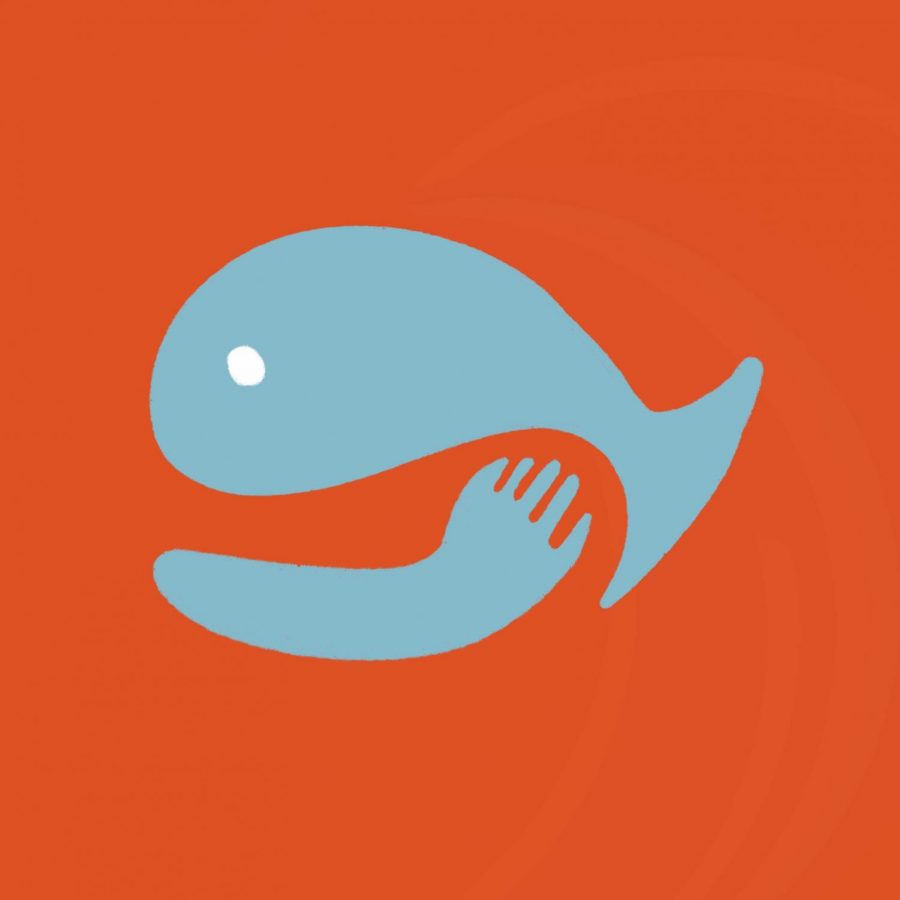Opinion | A pescatarian’s plea for sustainable seafood consumption
September 28, 2021
Does a trout have any less of a soul than a chicken? As a pescatarian, I choose not to think about that question.
All debates about the souls of poultry aside, pescetarianism is a more sustainable alternative to eating meat, when done correctly. Both traditional fishing and aquaculture — the farming of marine species — tend to produce fewer greenhouse gases than farming land animals. But considering the devastating effects of overfishing, the conscientious pescatarian must weigh the costs and benefits of their next fried calamari platter.
Overfishing occurs when fishers capture numbers of a given species faster than they can reproduce. Techniques such as using nets also capture fish indiscriminately, killing species that will never make it to market. According to Seafood Watch, a program of the Monterey Bay Aquarium, only 65% of fish stocks were at “biologically sustainable levels” as of 2017. Overfishing also threatens the balance of the ecosystem, especially in coral reefs, where fish eat algae that otherwise kill coral.
The World Wildlife Fund compiled a list of species most affected by overfishing. It’s better to avoid consuming those species when possible, especially when you don’t know where the fish is sourced from. Seafood Watch says large species such as cod and snapper are among the most susceptible to overfishing, as these species have longer life spans, and therefore can’t reproduce quickly enough to replace the portion of their population lost to fishing.
Aquaculture provides a possible solution to overfishing. Rather than taking fish from their original habitat, farmers can raise fish specifically for human consumption — meeting the demand for seafood without threatening wild populations. Look for farm-raised rather than wild-caught salmon, and eat more mollusks — such as oysters and mussels — which farmers across the country raise.
Not every fish farm uses sustainable practices, though, and it’s still possible to consume wild-caught fish ethically. Seafood Watch established standards for both fishing and aquaculture, which it uses to rate American fisheries and farms. These standards include ensuring wild populations are at healthy levels for fishing, and limiting the use of chemicals that can impact the surrounding water for aquaculture.
And even if fish are caught rather than farmed, those who choose fish over beef still help reduce greenhouse gas emissions. A 2018 study in the journal Frontiers in Ecology and the Environment found that beef production was responsible for more than 20 times more emissions than most forms of capture fishing and aquaculture.
Producing 40 grams of protein through fishing and aquaculture emits less than one kilogram of carbon dioxide. Beef production, meanwhile, creates almost 10 kilograms of carbon dioxide for the same amount of protein. Catfish mark a notable exception to this rule, with catfish production being similarly carbon intensive to beef.
Even in the case of other species, the picture is far from clear cut. Although fish production releases fewer greenhouse gases than beef production, it’s generally not more energy efficient. Fishing boats and water circulation systems for aquaculture consume a lot of energy.
The only fish species that require less energy than beef are mollusks and small pelagic fish — species such as mackerel and sardines.
In fact, when it comes to seafood, a tin of anchovies or an oyster on the half shell seem like the safest bets overall. Mollusks and small pelagic fish also contribute the least to acidification of earth’s oceans, and farmed mollusks can absorb excess nutrients linked to species destruction.
Consuming sustainable seafood doesn’t mean you have to limit yourself to sardines, though — that would make for a pretty bleak life. The Environmental Defense Fund and Seafood Watch have created species guides to help consumers make informed decisions when buying seafood. Both guides list species to enjoy and species to avoid — specifying whether it’s better to buy farmed or caught, local or imported.
In general, the most sustainable fish are those farmed in the United States, such as abalone, char, salmon and shrimp. Although susceptible to overfishing, albacore tuna caught in the U.S. is a pretty safe bet, especially when compared to bluefin and yellowfin tuna caught overseas. And bad news for sushi fans — octopus, eel and foreign-caught sea urchin are some of the least sustainable species.
We as consumers can put pressure on the fishing industry, but the responsibility to end overfishing ultimately lies on its shoulders. Fisheries must change their practices and begin putting long-term environmental concerns before short-term profit.
Nonetheless, consumers should still care where their fish comes from. Although far from a perfect system, aquaculture significantly lessens the impacts of overfishing on aquatic ecosystems. Consumers send a clear message when they actively choose farm-raised over wild-caught — farming is sexy, overfishing is not.
Charlie Taylor is aquaculture’s biggest fan. Write to her at CLT76@pitt.edu.



